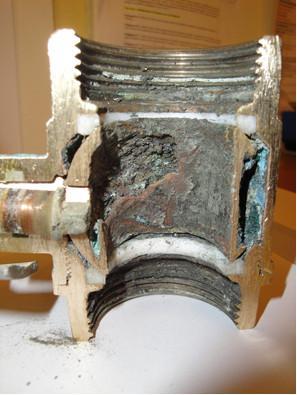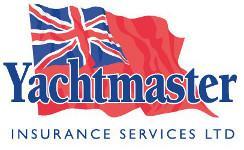The question of problematic seacocks is still very much with us. Do you know when you should use them? Do you know how many there are and where they are? Do you know what your seacocks are made of? Do you know the importance of what they are made of? Do you know if they work?
These questions are quite important and the correct answers to them could save you a lot of inconvenience, lost sailing time and money.
Take for example a customer of ours who decided to remove his holding tank for cleaning, much as he had done some 6 years previously. On the previous occasion he did the job afloat, turning off the appropriate seacocks, removing the tank for cleaning and then re-installing without any problem.
For the more recent operation the vessel was on its drying berth with the tide out. The seacocks were turned off, the piping disconnected and laid inside the hull and the tank removed ashore for cleaning. When the tide returned there was no one on board and the vessel filled with water and consequently did not re-float.
After pumping out investigations commenced to see what had gone wrong. It was quickly established that the seacocks, although turned to the closed position and with sufficient resistance on the handle to convince the user that the seacock was operating normally, had not functioned at all which lead to the flooding.
On removing and examining the seacocks it was apparent that the “ball” had disintegrated almost entirely. We cut one of the seacocks in half to have a better look; the result is shown in the photograph – they were both completely ineffective. The seacocks did appear in reasonable condition externally and they felt as though they were opening and closing normally but the operating handle spindles internallywere sheared off and the “ball” just disintegrated being of a low quality brass and what’s left of the ball component can be seen here.
Just imagine the consequences if the pipework had failed at sea and the seacocks were needed urgently!
The cost of sorting out the mess resulting from the flooding is about £6,000.
Lessons to be learned would include:
1. Only buy suitable quality seacocks / valves for marine use (bronze or DZR brass, not brass or tonval).
2. Always carry a means of blocking a failed seacock e.g. a wooden bung of a suitable size tied close to the seacock or through hull valve.
3. Turn below-waterline seacocks off when leaving the vessel unattended for security and to keep them working rather than seizing through neglect.
4. If disconnecting pipework tie up the open end above the waterline level where possible to prevent flooding.
5. Check seacocks are capable of holding back the water (if you can poke a piece of wire through, they are not!).
6. If you are undertaking this sort of work with the vessel dried out, make sure someone is on board when the tide returns.
Although our underwriters in this case were content to regard this as an “insured peril”, some underwriters might well be inclined to the view that the vessel was not left in a seaworthy condition and hence the claim would not be recoverable under their policy terms.
Given the seriousness of low quality brass valve failures Guy Simmons from GMS Marine Surveys always conducts further tests on all through hull valves, seacocks and skin fittings which includes the use of an illuminated "snake camera" or "endoscope" to inspect any suspect components internally whilst in their closed position. Another simple test that any owner can conduct is to shut off all valves when the vessel is ashore and then check that the ball is in the closed position by simply inserting a small wire or similar object from the outside of the vessel. Whilst this is not a conclusive test it is better than doing nothing at all and it will at least confirm that the ball is in fact turning with the spindle!
D Long - 30/7/2012
Return to Media Publications & Advice.

